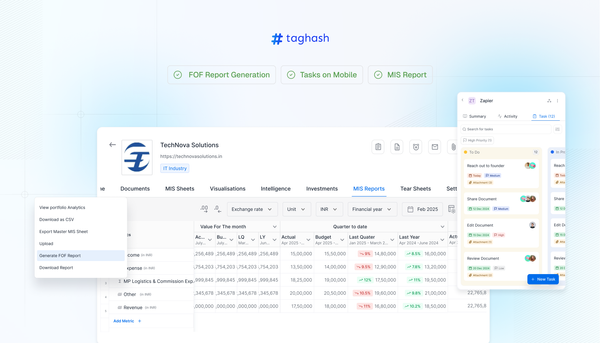How Family Offices are Navigating the ‘New Normal’
Adapting Investments for Success in a High-Rate Environment

In investing, few factors can shift as decisively as interest rates(r). For over a decade, ultra-low rates, fueled by aggressive central bank policies, created an environment of cheap capital that rewarded rapid growth and heavy borrowing. This era allowed private markets to flourish, enabling ambitious strategies that leveraged low borrowing costs. Today, however, that landscape has changed dramatically. Interest rates have surged to their highest levels in over 15 years, signaling the end of the low-cost capital era. This represents a significant recalibration—a "sea change"—that fundamentally alters how family offices and other investors must approach private markets.
Understanding the New Market Conditions
The sharp rise in interest rates reflects a global policy shift among central banks aimed at combating persistent inflation. As inflation remains elevated, central banks have raised borrowing costs significantly, dampening demand and attempting to stabilize prices. Central banks, notably the Federal Reserve, have tightened monetary policy, with rates in the range of 5.25% to 5.50%, with possibility of rate cuts, however still to be considered high by historical standards. This tightening not only impacts asset prices but also influences the availability of capital. In practical terms, higher debt costs mean increased scrutiny over growth assumptions, leading to an environment where debt-fueled expansion is no longer easily accessible. Consequently, valuations must be grounded in resilient fundamentals rather than speculative future promises.
Private markets, particularly those reliant on capital infusions, are feeling this pressure. While family offices have traditionally enjoyed strong returns from private assets, today's interest rate environment requires a recalibration of expectations. Strategies that thrived in a low-rate climate may struggle as borrowing costs rise. For family offices, this shift necessitates a reevaluation of asset allocation, risk management, and capital deployment.
Key Trends Impacting Asset Allocation
Higher Cost of Capital Raises the Bar for Returns: As interest rates climb, the expected returns from private assets must clear a higher hurdle to justify investments. Where returns once easily met or exceeded benchmarks, investors now demand higher performance to offset risk. This has led family offices to prioritize sectors with strong cash flows and tangible assets, such as infrastructure and mature private equity.
Selective Appetite for Venture and Growth Equity: Historically, family offices embraced venture capital for its potential for outsized growth. However, current interest rates have cooled this enthusiasm. In this environment, startups with lengthy paths to profitability appear less attractive. Yet, late-stage venture capital, where companies are closer to profitability or even cash flow-positive, continues to offer promising returns with moderated risk. A notable example includes family offices investing in healthtech companies like Amgen, which focus on commercializing FDA-approved products. Such investments allow family offices to back firms poised for growth while minimizing concerns over extended cash burn.
Real Estate Investments: From Growth to Cash Flow Focus: Real estate, once a favorite within private markets, faces challenges due to rising mortgage rates and shifting demographics. Family offices are moving away from speculative investments and focusing on stable, cash-generating properties, such as multifamily or industrial assets. The trend toward rental housing in metropolitan areas exemplifies this recalibrated approach, where high occupancy rates and resilient rental markets offer more predictable returns.
Private Debt: A Rising Star Amid Rate Pressures: High interest rates have made private debt an increasingly attractive option, enhancing yield opportunities. Unlike equity, which may experience valuation fluctuations, private debt provides fixed income returns that are more insulated from market volatility. Structured loans to mid-sized companies, like those arranged by Ares Management, often deliver robust yields and attractive risk-adjusted returns. Family offices benefit from the ability to structure debt terms with protective covenants, making private debt an appealing alternative to traditional fixed-income securities.
Emphasis on Resilient Sectors and Defensive Investments: Global market volatility has underscored the importance of defensive investments. Family offices are prioritizing sectors resilient to rate fluctuations, such as consumer staples, utilities, and healthcare. Investments in senior care facilities, for instance, align with demographic trends and defensive asset allocation, potentially delivering returns less exposed to economic downturns. Additionally, family offices are cautiously exploring real assets like agriculture and timberland, which can act as hedges against inflation while offering stable, long-term returns.
Insights for Family Offices on Asset Allocation in Private Markets
Balance Liquidity Needs with High-Yield Opportunities: A crucial insight for family offices is to maintain a balanced approach to liquidity. Given the less liquid nature of private assets, it’s essential to weigh yield benefits against cash flow requirements. Keeping a portion of assets in readily liquid securities, such as marketable stocks or bonds, can serve as a hedge against liquidity needs.
Align Allocations with Family Values and Time Horizon: Family offices with a multi-generational outlook may favor sectors that offer steady, inflation-protected returns, even if they require longer holding periods. For example, investing in green infrastructure projects can serve both sustainability goals and cash flow needs, enabling family offices to align investments with values while ensuring wealth preservation across generations.
Regularly Reassess Portfolio Composition: Continuously reassessing portfolio composition is vital for adapting to changing economic conditions. As interest rates fluctuate, private market opportunities evolve, necessitating a proactive approach to asset allocation. Family offices should remain flexible, reallocating capital as lucrative opportunities emerge, particularly in under-explored sectors like impact investing and alternative real assets.
Rethinking Long-Term Strategies
For family offices, navigating today’s market isn’t merely about adjusting investment strategies; it’s about adopting a mindset suited for a high-rate world. Private markets continue to offer valuable diversification and growth opportunities, but achieving consistent returns requires sharper analysis and adaptability to the evolving dynamics of capital costs and value creation. In this era of elevated interest rates, focusing on quality, resilience, and strategic asset allocation is paramount.
About Taghash
Taghash provides an end-to-end platform for venture funds, private equity, fund of funds, and other alternative investment funds. Over the last seven years, we have served as a tech arm for top VCs, helping them manage their operations across deal flow, portfolio, fund, and LP management.
Trusted by leading fund managers like Blume Ventures, Kalaari Capital, and A91 Partners, we empower our clients to better manage their funds and achieve greater success.
Interested in learning how Taghash can elevate your fund management? Click here to book a demo.





